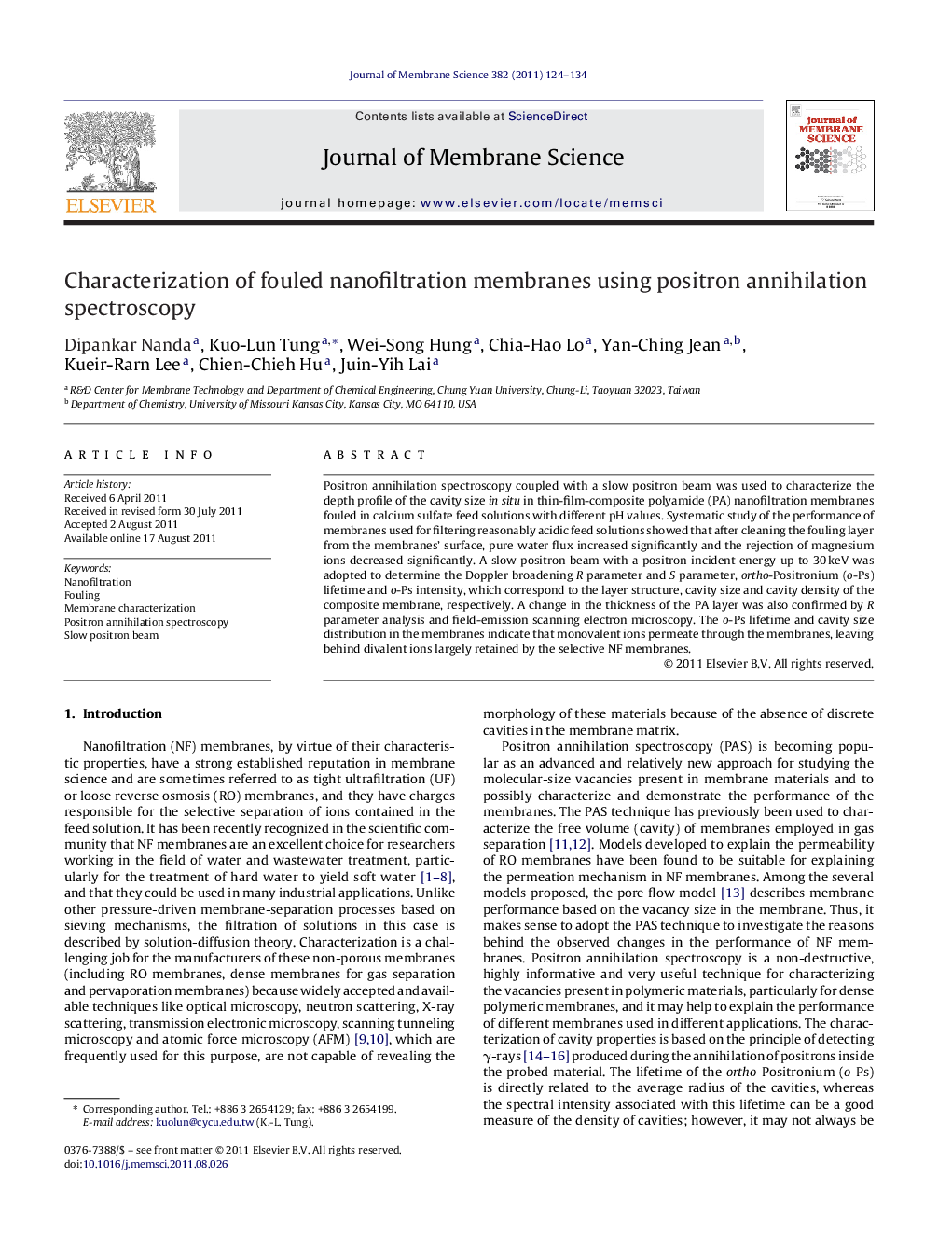| Article ID | Journal | Published Year | Pages | File Type |
|---|---|---|---|---|
| 635650 | Journal of Membrane Science | 2011 | 11 Pages |
Positron annihilation spectroscopy coupled with a slow positron beam was used to characterize the depth profile of the cavity size in situ in thin-film-composite polyamide (PA) nanofiltration membranes fouled in calcium sulfate feed solutions with different pH values. Systematic study of the performance of membranes used for filtering reasonably acidic feed solutions showed that after cleaning the fouling layer from the membranes’ surface, pure water flux increased significantly and the rejection of magnesium ions decreased significantly. A slow positron beam with a positron incident energy up to 30 keV was adopted to determine the Doppler broadening R parameter and S parameter, ortho-Positronium (o-Ps) lifetime and o-Ps intensity, which correspond to the layer structure, cavity size and cavity density of the composite membrane, respectively. A change in the thickness of the PA layer was also confirmed by R parameter analysis and field-emission scanning electron microscopy. The o-Ps lifetime and cavity size distribution in the membranes indicate that monovalent ions permeate through the membranes, leaving behind divalent ions largely retained by the selective NF membranes.
Graphical abstractFigure optionsDownload full-size imageDownload high-quality image (191 K)Download as PowerPoint slideHighlights► PAS is promising for characterizing nanosize cavities in NF/RO membranes. ► Slow positron beam can provide depth profile properties of cavity in NF/RO membranes. ► o-Ps lifetime depth profile shows the smallest cavity is located in transient layer. ► R-parameter analysis shows PA layer thickness decreased as the feed pH is lowered.
